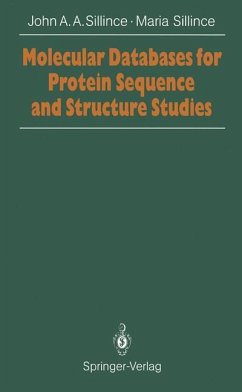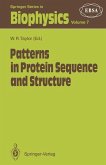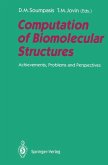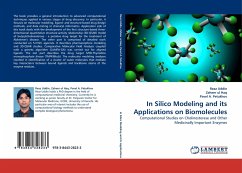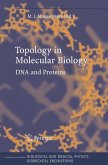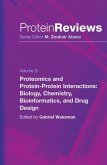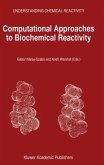John A.A. Sillince, Maria Sillince
Molecular Databases for Protein Sequences and Structure Studies
An Introduction
John A.A. Sillince, Maria Sillince
Molecular Databases for Protein Sequences and Structure Studies
An Introduction
- Broschiertes Buch
- Merkliste
- Auf die Merkliste
- Bewerten Bewerten
- Teilen
- Produkt teilen
- Produkterinnerung
- Produkterinnerung
The amount of molecular information is too vast to be acquired without the use of computer-bases systems. The authors introduce students entering research in molecular biology and related fields into the efficient use of the numerous databases available. They show the broad scientific context of these databases and their latest developments. They also put the biological, chemical and computational aspects of structural information on biomolecules into perspective. The book is required reading for researchers and students who plan to use modern computer environment in their research.
Andere Kunden interessierten sich auch für
![Patterns in Protein Sequence and Structure Patterns in Protein Sequence and Structure]() Patterns in Protein Sequence and Structure77,99 €
Patterns in Protein Sequence and Structure77,99 €![Computation of Biomolecular Structures Computation of Biomolecular Structures]() Computation of Biomolecular Structures75,99 €
Computation of Biomolecular Structures75,99 €![In Silico Modeling and its Applications on Biomolecules In Silico Modeling and its Applications on Biomolecules]() Reaz UddinIn Silico Modeling and its Applications on Biomolecules44,99 €
Reaz UddinIn Silico Modeling and its Applications on Biomolecules44,99 €![Specificity of Proteolysis Specificity of Proteolysis]() Borivoj KeilSpecificity of Proteolysis75,99 €
Borivoj KeilSpecificity of Proteolysis75,99 €![Topology in Molecular Biology Topology in Molecular Biology]() M.I. Monastyrsky (ed.)Topology in Molecular Biology112,99 €
M.I. Monastyrsky (ed.)Topology in Molecular Biology112,99 €![Proteomics and Protein-Protein Interactions Proteomics and Protein-Protein Interactions]() Gabriel Waksman (ed.)Proteomics and Protein-Protein Interactions153,99 €
Gabriel Waksman (ed.)Proteomics and Protein-Protein Interactions153,99 €![Computational Approaches to Biochemical Reactivity Computational Approaches to Biochemical Reactivity]() G bor N ray-Szab¢ / Arieh Warshel (Hgg.)Computational Approaches to Biochemical Reactivity77,99 €
G bor N ray-Szab¢ / Arieh Warshel (Hgg.)Computational Approaches to Biochemical Reactivity77,99 €-
-
-
The amount of molecular information is too vast to be acquired without the use of computer-bases systems. The authors introduce students entering research in molecular biology and related fields into the efficient use of the numerous databases available. They show the broad scientific context of these databases and their latest developments. They also put the biological, chemical and computational aspects of structural information on biomolecules into perspective. The book is required reading for researchers and students who plan to use modern computer environment in their research.
Produktdetails
- Produktdetails
- Verlag: Springer / Springer Berlin Heidelberg / Springer, Berlin
- Artikelnr. des Verlages: 978-3-642-76811-8
- Softcover reprint of the original 1st ed. 1991
- Seitenzahl: 260
- Erscheinungstermin: 22. Dezember 2011
- Englisch
- Abmessung: 235mm x 155mm x 15mm
- Gewicht: 400g
- ISBN-13: 9783642768118
- ISBN-10: 3642768113
- Artikelnr.: 36122018
- Herstellerkennzeichnung
- Springer-Verlag GmbH
- Tiergartenstr. 17
- 69121 Heidelberg
- ProductSafety@springernature.com
- Verlag: Springer / Springer Berlin Heidelberg / Springer, Berlin
- Artikelnr. des Verlages: 978-3-642-76811-8
- Softcover reprint of the original 1st ed. 1991
- Seitenzahl: 260
- Erscheinungstermin: 22. Dezember 2011
- Englisch
- Abmessung: 235mm x 155mm x 15mm
- Gewicht: 400g
- ISBN-13: 9783642768118
- ISBN-10: 3642768113
- Artikelnr.: 36122018
- Herstellerkennzeichnung
- Springer-Verlag GmbH
- Tiergartenstr. 17
- 69121 Heidelberg
- ProductSafety@springernature.com
Among the most successful applications of computers is the efficient use of structural information databases. Many modern research topics rely completely on information stored in a computer. This book combines the biological, chemical and computational aspects of contemporary molecular biology.
One: Introduction.- 1.1 Aims of book.- 1.2 The structure and role of proteins and nucleic acids.- 1.3 The nature of molecular data and its representation.- 1.4 The importance of protein structure and function studies.- 1.5 References.- Two: Computer-Based Research Tools for Molecular Science.- 2.1 The use of computers and online facilities in sequencing.- 2.2 The importance of sequence databanks in sequence analysis.- 2.3 Integration of databank searching with sequence determination.- 2.4 References.- Three: Online Databases in Biochemistry and Molecular Science.- 3.1 The importance of online databases.- 3.2 Why use online services?.- 3.3 What problems motivate using online services?.- 3.4 Types of online databases and CD-ROMs.- 3.5 The financing of databases.- 3.6 Training end-users.- 3.7 Current awareness and in-house systems.- 3.8 References.- Four: Methods of Computer Representation and Registration.- 4.1 Ambiguous versus unambiguous representation.- 4.2 Graphical data representation.- 4.3 Interconversion of structure representation.- 4.4 Registration.- 4.5 References.- Five: Database Searching in Biochemistry and Molecular Science.- 5.1 Bibliographic searching.- 5.2 Patent searching.- 5.3 Substructure searching.- 5.4 References.- Six: Using Expert Systems for Database Searching in Molecular Science.- 6.1 Introduction.- 6.2 Elements of database systems (DBS).- 6.3 Elements of knowledge base systems (KBS).- 6.4 Elements of a knowledge-based management system (KBMS).- 6.5 References.- Seven: The Main Sequence Databanks in Molecular Science.- 7.1 Definitions.- 7.2 Short history of sequence databanks.- 7.3 What databases are available?.- 7.4 The main sequence databases.- 7.5 Data structure and management.- 7.5 Data retrieval and manipulation.- 7.7 An exampleof protein sequnce analysis software.- 7.8 References.- Eight: The Main Structure Databanks in Molecular Science.- 8.1 The significance and history of structure databanks.- 8.2 The Protein Data Bank (PDB) at Brookhaven.- 8.3 The Cambridge Crystallographic Databank.- 8.4 The Complex Carbohydrate Structure Database (CCSD).- 8.5 Integrated access to structure and sequence data.- 8.6 References.- Nine: Sequence Searching.- 9.1 Introduction.- 9.2 First example of a sequence search.- 9.3 Second example of a sequence search.- 9.4 Protein structure prediction.- 9.5 References.- Ten: Case Study: Specification of an Expert System for Protein Structure Prediction.- 10.1 Introduction.- 10.2 Problem dexcription.- 10.3 The main functions of a structure prediction expert system.- 10.4 Elicitation of knowledge from protein scientists.- 10.5 References.- 11: Appendix.- 11.1 Source of information.- 11.2 Addresses.- 11.3 References.
One: Introduction.- 1.1 Aims of book.- 1.2 The structure and role of proteins and nucleic acids.- 1.3 The nature of molecular data and its representation.- 1.4 The importance of protein structure and function studies.- 1.5 References.- Two: Computer-Based Research Tools for Molecular Science.- 2.1 The use of computers and online facilities in sequencing.- 2.2 The importance of sequence databanks in sequence analysis.- 2.3 Integration of databank searching with sequence determination.- 2.4 References.- Three: Online Databases in Biochemistry and Molecular Science.- 3.1 The importance of online databases.- 3.2 Why use online services?.- 3.3 What problems motivate using online services?.- 3.4 Types of online databases and CD-ROMs.- 3.5 The financing of databases.- 3.6 Training end-users.- 3.7 Current awareness and in-house systems.- 3.8 References.- Four: Methods of Computer Representation and Registration.- 4.1 Ambiguous versus unambiguous representation.- 4.2 Graphical data representation.- 4.3 Interconversion of structure representation.- 4.4 Registration.- 4.5 References.- Five: Database Searching in Biochemistry and Molecular Science.- 5.1 Bibliographic searching.- 5.2 Patent searching.- 5.3 Substructure searching.- 5.4 References.- Six: Using Expert Systems for Database Searching in Molecular Science.- 6.1 Introduction.- 6.2 Elements of database systems (DBS).- 6.3 Elements of knowledge base systems (KBS).- 6.4 Elements of a knowledge-based management system (KBMS).- 6.5 References.- Seven: The Main Sequence Databanks in Molecular Science.- 7.1 Definitions.- 7.2 Short history of sequence databanks.- 7.3 What databases are available?.- 7.4 The main sequence databases.- 7.5 Data structure and management.- 7.5 Data retrieval and manipulation.- 7.7 An exampleof protein sequnce analysis software.- 7.8 References.- Eight: The Main Structure Databanks in Molecular Science.- 8.1 The significance and history of structure databanks.- 8.2 The Protein Data Bank (PDB) at Brookhaven.- 8.3 The Cambridge Crystallographic Databank.- 8.4 The Complex Carbohydrate Structure Database (CCSD).- 8.5 Integrated access to structure and sequence data.- 8.6 References.- Nine: Sequence Searching.- 9.1 Introduction.- 9.2 First example of a sequence search.- 9.3 Second example of a sequence search.- 9.4 Protein structure prediction.- 9.5 References.- Ten: Case Study: Specification of an Expert System for Protein Structure Prediction.- 10.1 Introduction.- 10.2 Problem dexcription.- 10.3 The main functions of a structure prediction expert system.- 10.4 Elicitation of knowledge from protein scientists.- 10.5 References.- 11: Appendix.- 11.1 Source of information.- 11.2 Addresses.- 11.3 References.

